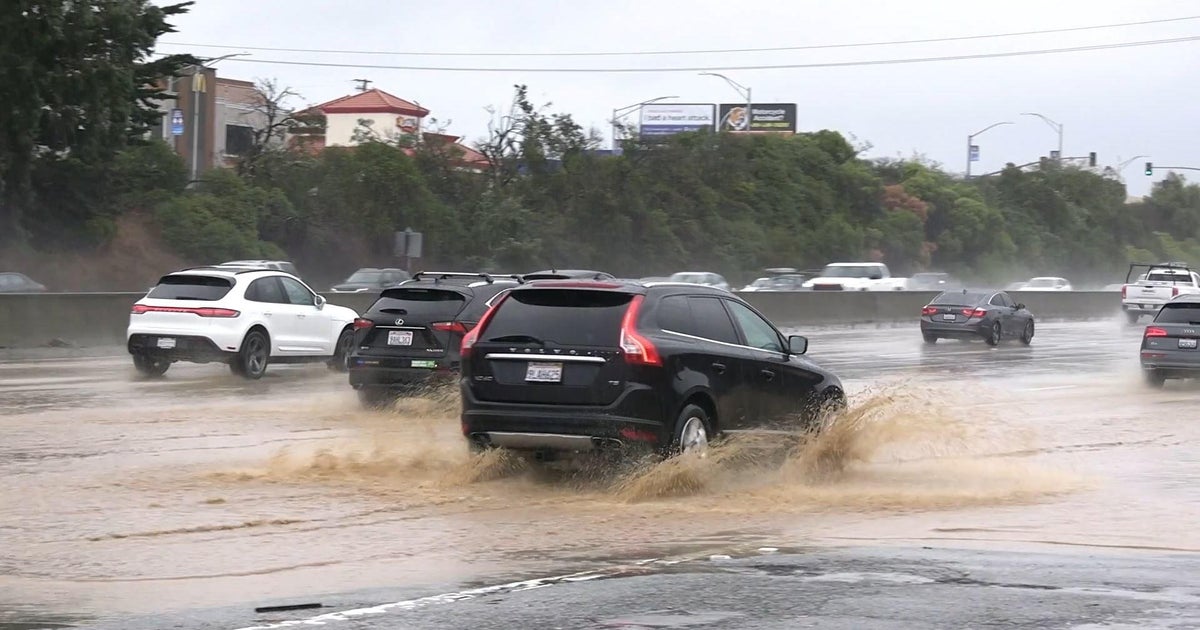Looking Back At The History Of Candlestick Park
SAN FRANCISCO (KPIX 5) -- In the late 1950s, San Francisco was making good on a deal. They had promised the Giants a new stadium if they moved west from New York.
"You know, there was a grand jury investigation in 1958 about this whole deal. And nobody would cop out as to who actually picked this spot," park historian Ted Atlas said.
According to Atlas, they considered a handful of sites.
"They discussed downtown, the merchants didn't want it. They discussed South of Market, pretty much where Moscone is now," Atlas said. "They looked actually right around the site where AT&T is, but the port was still very much in operation in those days."
City planners settled on Candlestick Point, bought the land, and built the stadium, named Candlestick Park following a name-the-park contest on March 3, 1959.
Architect John Bolles designed a horseshoe open in the outfield. It turned out to be a gateway for winds whipped off San Francisco Bay. "He did design this roof as an airfoil to cut the wind down, and originally it was supposed to go all the way down and turn and go 150 feet out of left field - because the wind really does come out of that left field corner. But the city shortened it to save money," Atlas said, "So who knows if that would have worked or not?"
A radiant floor heating system under the stands didn't help. In fact, it was so cold that famed San Francisco attorney Melvin Belli wanted his season ticket money back.
Atlas said, "The Giants had advertised it would be warm. It wasn't warm and he sued…for the price of his season tickets. Melvin Belli showed up in court in a big Alaskan parka. He won his lawsuit, which was around $1,500."
Despite the weather, it was a golden time for the Giants. Willie Mays thrilled the crowds. Felipe, Matty and Jesus Alou created the first all-brother outfield in Major League Baseball history. Juan Marichal also pitched a no-hitter.
"There are five in the Hall of Fame who have all played here at the same time, with Mays, Marichal, Perry, McCovey, and Cepeda," Atlas said.
Candlestick also hosted its first professional football games in the 1960s. Not the 49ers, the Oakland Raiders played part of the 1960 season and all of the 1961 season at the 'Stick.
But the biggest stars of the 1960s may not have been athletes at all.
"The Beatles performed their last public concert here, at Candlestick Park Stadium," said Amanda Tugwell, Canldestick Park's director of stadium tours and events.
"They walked right through the visitors' lockers room right here, got ready for their last time together as a band," she said.
The Beatles played just 11 songs in that final show. "It lasted only 33 minutes. And so it was a very kind of short concert, but still it was such an experience for fans," Tugwell said.
Fans were about to get a new spectacle. The 49ers wanted to upgrade from the old Kezar Stadium. Atlas said the city considered building something new, but finally decided on converting Candlestick to dual-purpose.
"They added escalators that were in the original plan, they added other gates, they added the football press box. And did other things to convert it for the 49ers, and completed it just in time for the 1971 season," Atlas said.
A project to enlarge the stadium closed the open end of the horseshoe and added more seats, but not the hoped-for wind protection.
"They did think by enclosing the stadium that it would cut the winds down. And really what it did is it creates sort of a negative air pressure," Atlas said. "Sort of sucks things up. That's why you get the swirling hot dog wrappers."
During those years, Candlestick became a place of pilgrimage for more than football fans. In 1987, Pope John Paul II held a Mass for more than 70,000 people.
Tugwell said security was paramount. "We had a stage set up with a little trap door. So if anyone were to harm him, he would drop down into a pope mobile," she said.
Two years later, the Loma Prieta earthquake rocked the park, which was full of World Series fans at the time. Crews had to repair broken concrete and cracks. But Candlestick, which was built on rock, stood strong.
After the quake, there would only be 10 more years of baseball. The Giants played their last game at Candlestick in September of 1999. Now it's the 49ers turn to say goodbye. After this season, they will play at Levi's Stadium in Santa Clara.
(Copyright 2013 by CBS San Francisco. All rights reserved. This material may not be published, broadcast, rewritten or redistributed.)



